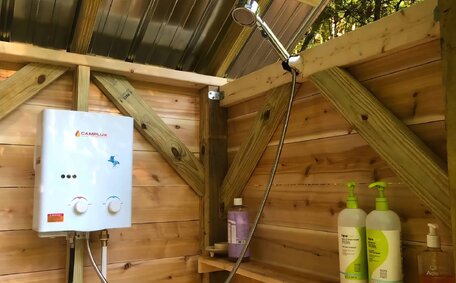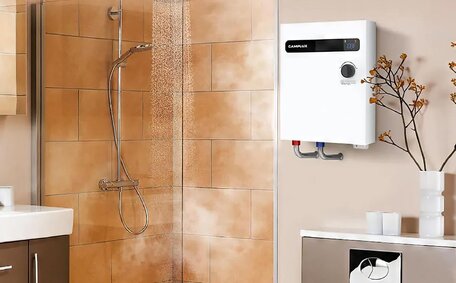Introduction to Kitchen and Bathroom Sink Blockages
Understanding the distinct functions of kitchen and bathroom sinks is key to identifying their blockage differences. Bathroom sinks deal mostly with soap, hair, and toothpaste while kitchen sinks manage food scraps, fats, and other debris, occasionally requiring the aid of a drain snake. Neglecting to maintain either sink can lead to severe blockages, disrupting your home’s plumbing.
In this article, we will explain the various causes, preventive measures, and unblocking strategies for kitchen and bathroom sinks. This article will cover the common materials that block drains and outline how to rectify the issue before resorting to professional help. Comprehending why these differences exist can guide swift unblocking strategies, ultimately preventing severe damage.
Common Causes of Kitchen Sink Clogs
Your kitchen sinks confront one of the most challenging obstructing issues due to the various types of debris that go down the sink drain. One of the most common culprits is oil and grease, especially bacon or cooking fat, which adheres into your pipes.
Foods like pasta, rice, oatmeal, and vegetables can easily ensnare and contribute to sink blockages, particularly when combined with solidifying grease. As layers of food accumulate, they can turn solid, making it arduous for sink water to penetrate, this results in a narrowed passageway.
Apart from the washing machine, coffee grounds and tea leaves are significant contributors to sink drains blocking in the kitchen. Though small, they get wedged in the narrow elbow pipe, commonly known as the sink trap, underneath the sink. When you find your sink blocked, it’s often due to chunkier food waste like eggshells, fruit peels, and other compostable items.
Just like bathroom sinks, Accumulated hair and soap residue build up over time in a blocked kitchen sink, ensnaring further debris flowing down the drain. A combination of such substances can make it difficult for water to flow freely down kitchen sinks.
Typical Culprits Behind Bathroom Sink Clogs
Bathroom sinks most likely clog due to scum hair, soap residue, toothpaste, and other grooming debris; an accumulation your bathroom pipes can all too easily gather. During our grooming routines, loose strands of hair and soap scum can accumulate and meander down the bathroom sink. Soap scum also clings to the inner surface of pipes, ensnaring further matter that can stick and build up gradually.
Toothpaste is another offender as it solidifies post-use and then can become wedged into the drain. As with kitchen sinks, small items like cotton swabs and dental floss navigate into the sink then venture down the plughole, incrementally narrowing the pathway for water down sink until it won’t drain.
Though bathroom sink clogs are less about food, they still occur from products like moisturisers, and these can be tackled with different methods. Discarding oils from moisturisers and other greasy products into the sink can lead to substantial blockages.
Understanding how to unclog a kitchen sink with tools like strainers and white vinegar is also essential for preventing blockages.
Comparing Blockage Troubleshooting
Effective unclogging methods vary; in kitchens with prevalent greasy food particles, specialised approaches are required. Begin by using a plunger in an up and down motion; often, this alone can clear the blockage, followed by homemade remedies such as baking soda, vinegar, enzymatic drain cleaners, or manual snaking. For stubborn blockages, pouring hot water down the drain and using intense snaking might be necessary to clear the accumulated grease and food.
Kitchen Sinks
Pour boiling water into the drain, follow with a vinegar and baking soda mixture, let sit for 10 minutes, then rinse with additional hot water.
Use a straightened wire coat hanger to adeptly clear blockages and restore flow to your drain. Start with a plunger over the drain to manually dislodge bits. Due to heavy debris, kitchen sink clogs can be more difficult to clear.
If DIY methods fail, enzymatic drain cleaners can be used overnight for kitchen sinks, followed by a water flush. In extreme cases, you’ll need a drain auger, working a rotating cable down to physically dismantle and extract the blockage.
Bathroom Sinks
To unclog bathroom sink clogs, which consist more of soap scum hair and residue, try straining out the mix with a drain catcher first. A zip-it tool or drain stopper adjustment can efficiently remove gunk and clear your bathroom drain. Apply the baking soda vinegar mixture with your hands, enveloping the drain for 5 minutes prior to a hot water flush.
Find out how to end up with a pristine unblocked sink using specialised bathroom drain cleaners that can dissolve soap scum and residue. Ensure to ventilate and clean area well during the use of chemical drain cleaners. Finish the process by rinsing with cold water after snaking the pipes with a flexible corkscrew tool to pull out any lingering hair and debris.
Preventing Future Clogs
Hair catchers prevent sink clogs by trapping food, oils, and harsh chemicals before they can go down the drain. Clean your pipes with baking soda monthly and faithfully call out enzyme cleaner treatments biannually to manage buildup effectively. If numerous drains are regressing or odours akin to sewer gas arise, get on the phone to a plumber swiftly, including issues concerning your toilet.
Preventative Maintenance for Healthy Drains
Preventing future blocked drains that lead to water struggling down the drain in kitchen and bathroom sinks requires vigilant maintenance and garbage disposal habits. The best way to start is by installing sink filters or using garbage disposals to trap food remnants, hair, and various debris before they enter the pipes. Avoid pouring grease, oil, or harsh chemicals down the drain to prevent blockages in your plumbing system.
Keep a container in the kitchen to collect cooking grease and oils instead of pouring them down the drain. Rather than pouring fat down the sink, let it solidify and then dispose of it in the bin. Compost edible leftovers where possible, or consign them to the bin, preventing their descent to go down drain sans a disposal unit.
Regularly clean your drain with a mix of boiling water, baking soda, and vinegar, and rinse thoroughly after 10 minutes. Consider using a natural drain cleaner; enzyme-based foaming products every 3 months can manage water and control buildup in tricky elbow pipes.
Biannually, be diligent in performing a deeper clean by snaking your sinks to prevent unwelcome blockages from deteriorating your water drain flow, using a flexible corkscrew. Remove any stubborn debris or strands collected by the drain snake to effectively clear the drain. Place a bucket under your workspace to catch any stray drips that may bubble up through the pipes during maintenance.
Through vigilant use of strainers, proper waste disposal, and consistent maintenance, you ensure uninterrupted water flow and avoid expensive plumbing issues. If you encounter multiple drains backing up or detect sewer gas odours, seek a seasoned plumber immediately.
When Professional Help is Needed
There are a few scenarios where it’s best to call in a professional plumber to address your clogged kitchen or bathroom sinks.
If at-home attempts with baking soda, vinegar, plunging, and snaking fail, it’s time to call in a professional plumber. Chronic clogs that persist despite diligent attempts can get your plumbing system in trouble, calling for expert diagnosis and repair; a sign to do your plumbing checks.
Should you experience widespread drainage problems or detect sewage odours, tree roots or similar obstructions may have caused a main sewer line blocked drain, necessitating urgent professional intervention.
Spotting signs of water damage under cupboards or dampness behind basins should be a prompt to find out if you should contact for professional service. Unchecked leaks can quickly damage under sink cabinets, leading to mould, rot, and structural damage.
For kitchen sinks specifically, persistent grease or fat buildup that keeps resulting in blockages no matter how vigorously you plunge or snake the build-up down sink yourself shows the need for commercial-grade hydrojetting equipment and acid treatments.
And any situation where your efforts seem to worsen the clog, pushing blockages deeper, rendering the sink still problematic, indicates it’s time to seek professional help. A professional possesses the necessary equipment and expertise to get job done by removing persistent grime without exacerbating the issue or harming your plumbing.






